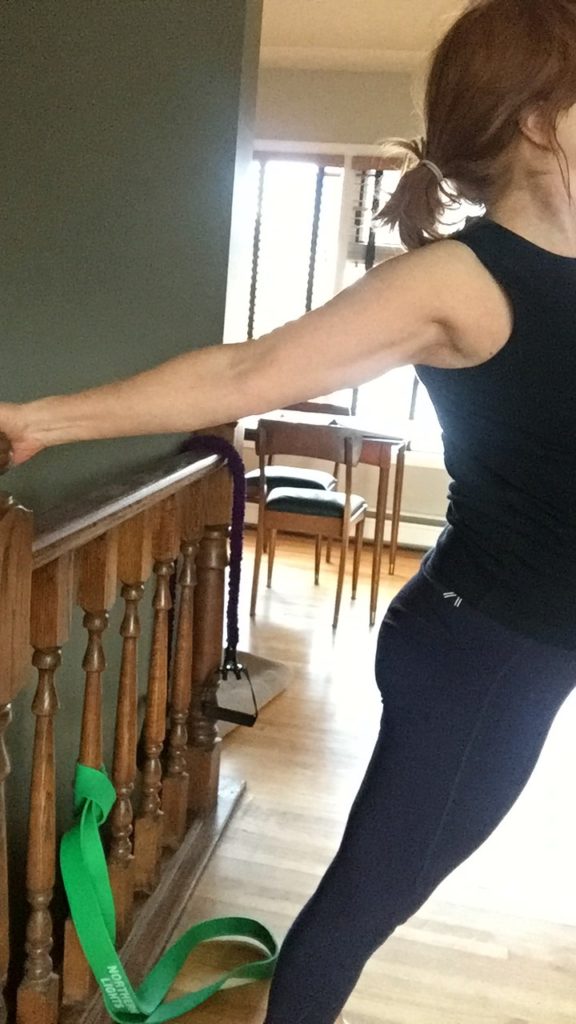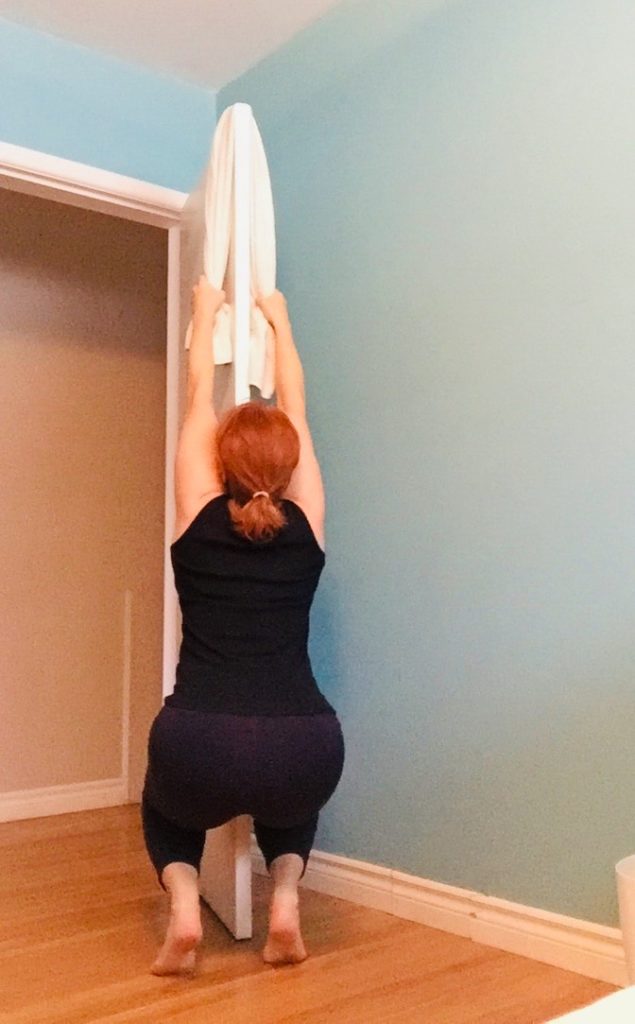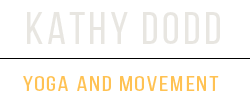# 5 Hanging! Yes, this one is a real game changer for the shoulders.
Hanging can benefit your upper body in so many ways. I am talking about a passive hang – one where you hold onto the bar or overhead grip and let your shoulders relax and your shoulder blades elevate.
Hanging from a bar—also known as brachiating—is something we should all be doing a lot more of. The shoulder is the most mobile joint in the entire body, but through overuse and improper mechanics, we’ve reduced that mobility.
When you hang, the humerus [the long bone of the arm] presses into the acromion [a bony extension of the shoulder blade]. This helps release any impingements in the shoulder and improves mobility while reducing pain. John M. Kirsch, an orthopedic surgeon says that 99% of shoulder pain can be cured and prevented by hanging from a bar. (watch this video to learn more about Dr Kirsch’s book)
Hanging also helps preserve or extend the range of motion in the shoulders—something many of us lose with age—especially when lifting or pressing the arms overhead. “Our shoulders evolved to hang, and they may need this movement from time to time in order to continue to have optimum function,” notes Todd Hargrove, a functional fitness expert and the author of Guide to Better Movement. “It’s a much more natural position than something like a shoulder press, because gravity works for you, not against you. Plus, it stretches the lats and pecs while strengthening your grip,” he says.
Activities such as sitting at an office desk or standing up for prolonged periods can result in a great deal of compression on the spine, even sleeping in bed can have minor spinal compression effects.
You can use brief periods of hanging for decompression of the spine and to relieve the stress and pressure off the spine, back, nerves and overall body. These hanging exercises can strengthen and be a preventative strategy to avoid ongoing spinal compression. The benefits from spinal decompression can be fantastic for your overall well being and posture, you will feel looser more flexible and limber. It will also reverses the forward slouching tendency that so many of us have working at a desk.
One caveat: If you have bursitis, bone spurs, rotator cuff tears, adhesive capsulitis, or a similar injury, talk to your doctor before adding hanging to your regimen.
You don’t have to start with overhead hanging. Instead start with something like this

Then experiment with these

Then you can use a towel for this overhead hang (notice my feet are still on the ground?)

Go slowly and never pass up the chance to play on the monkey bars at the playground!
You can start to practice your pulling actions too! Start with a TRX or a dumb bell row to further strengthen shoulders. See a quick video here.
